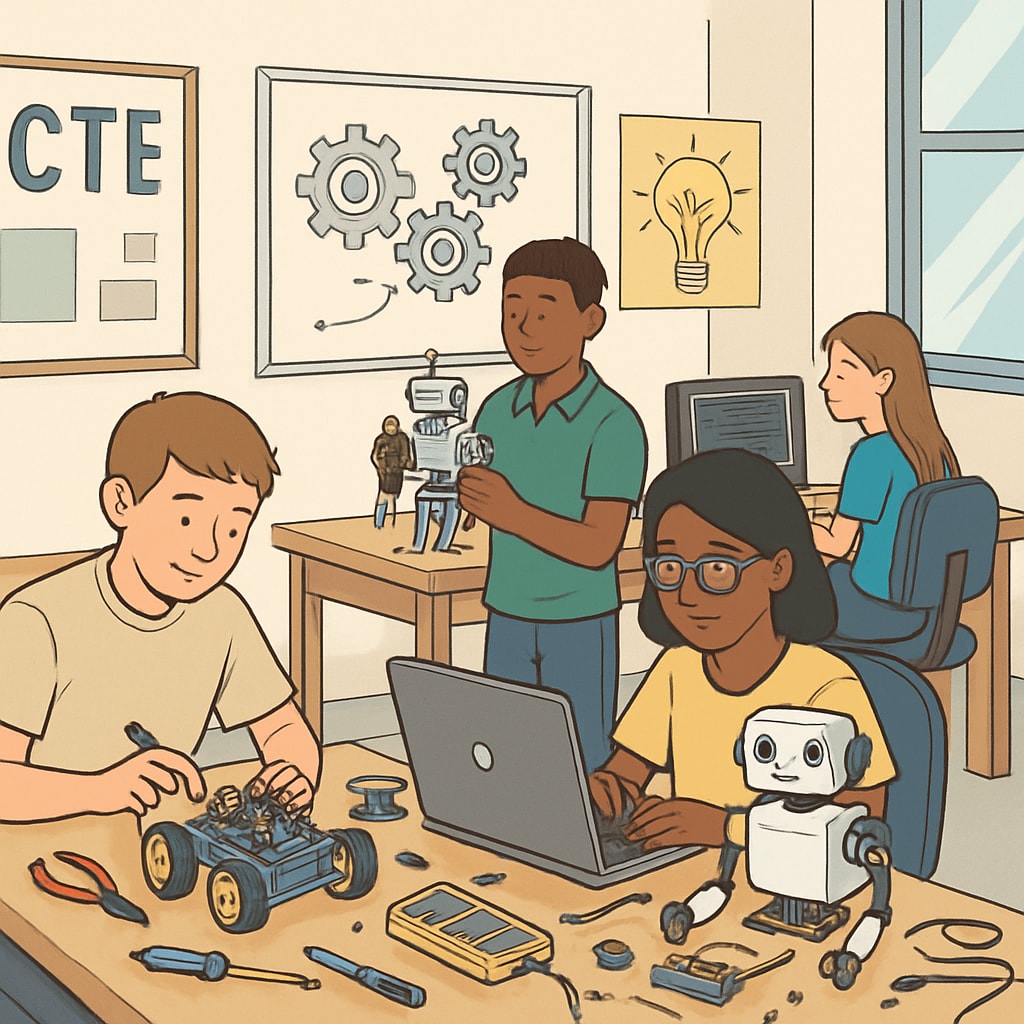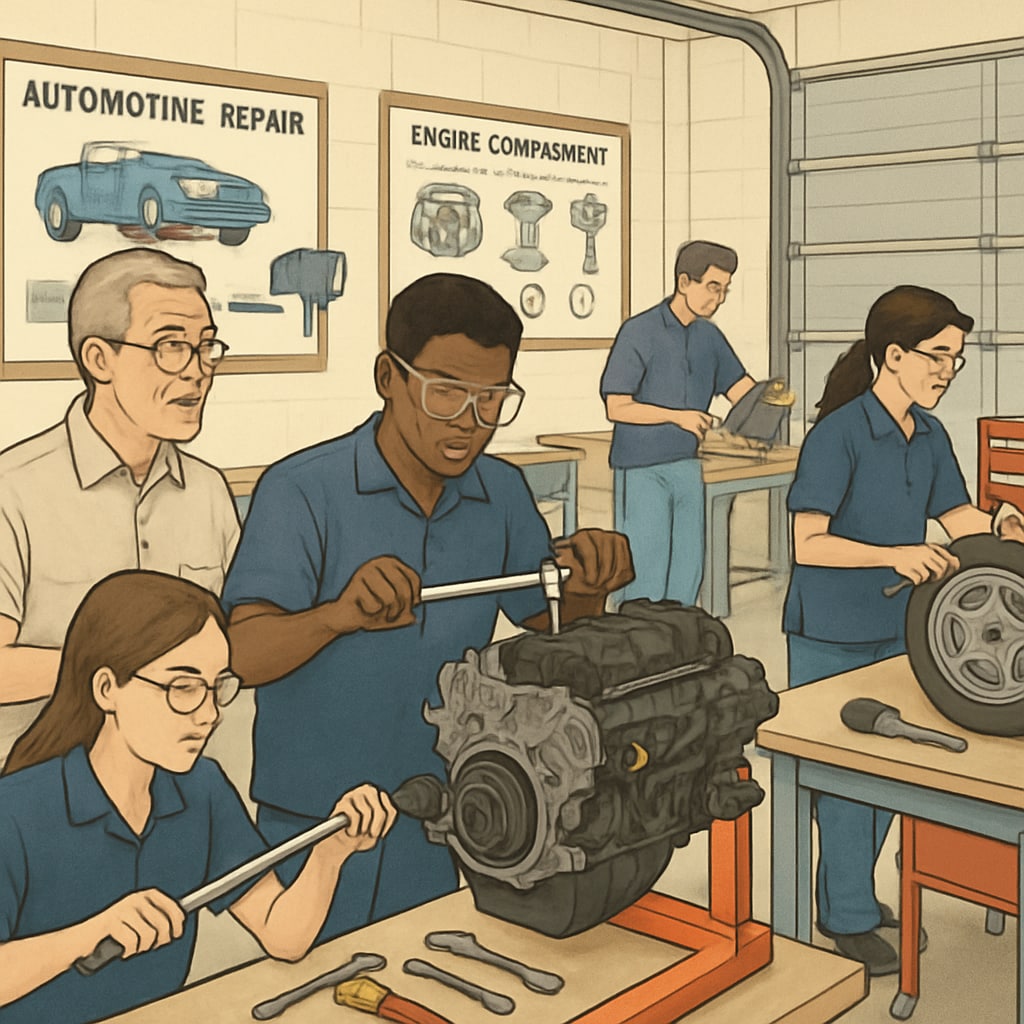The integration of Career and Technical Education (CTE), district implementation strategies, and traditional academic subjects has become a significant focus in modern K12 education. As schools aim to prepare students for both college and career pathways, striking a balance between vocational training and traditional disciplines is increasingly vital. This article delves into the importance of CTE, examines its implementation across diverse school districts, and provides actionable recommendations for its seamless integration with conventional curricula.
Understanding the Role of Career and Technical Education
Career and Technical Education (CTE) is designed to equip students with practical skills and knowledge for specific careers, ranging from healthcare to technology. Unlike traditional subjects, which often focus on theoretical knowledge, CTE emphasizes hands-on experience and real-world applications. This focus makes CTE an essential part of preparing students for the demands of a rapidly evolving job market.
For example, students in a CTE program may learn coding in a computer science course while also understanding its application in industries like finance or entertainment. According to a report from the U.S. Bureau of Labor Statistics, jobs requiring technical skills are projected to grow significantly over the next decade, highlighting the importance of integrating CTE into K12 education.

Challenges in Implementing CTE Across School Districts
While the benefits of CTE are clear, its implementation varies widely across school districts. Factors such as funding, teacher training, and community partnerships play critical roles in shaping CTE programs. For instance, affluent districts may have access to advanced facilities and industry connections, while underfunded districts struggle to offer even basic courses.
Additionally, there is often a stigma associated with vocational training, as it is sometimes perceived as less prestigious than academic pathways. Overcoming these challenges requires a concerted effort from policymakers, educators, and industry leaders to ensure equitable access to high-quality CTE programs.

Balancing CTE and Traditional Academic Subjects
One of the main concerns in integrating CTE into K12 education is maintaining a balance with traditional academic subjects. While subjects like mathematics, science, and literature are crucial for developing critical thinking and communication skills, CTE offers the practical knowledge that complements these disciplines.
To achieve this balance, schools can adopt the following strategies:
- Integrated Curriculum: Combine academic learning with vocational training. For example, a physics course could include a module on mechanical engineering applications.
- Flexible Schedules: Allow students to split their time between CTE programs and traditional classes, ensuring they benefit from both.
- Partnerships with Industries: Collaborate with local businesses to provide students with internships and mentorship opportunities that bridge classroom learning and real-world experience.
These approaches not only enrich the learning experience but also help students see the relevance of their education in real-world contexts.
Policy Recommendations for Effective Integration
For CTE to thrive alongside traditional subjects, supportive policies at the district, state, and national levels are essential. Policymakers should consider the following recommendations:
- Increase Funding: Allocate resources specifically for CTE programs, ensuring equitable access for all students.
- Professional Development: Provide training for teachers to effectively combine CTE with traditional subjects.
- Standardized Metrics: Develop consistent criteria for evaluating the success of CTE programs, focusing on both academic and career outcomes.
These initiatives can help create a robust framework where CTE and traditional academics complement rather than compete with each other.
Conclusion: Preparing Students for the Future
In conclusion, the integration of Career and Technical Education, district implementation strategies, and traditional academic subjects is not just a trend but a necessity for preparing students for the challenges of the 21st century. By balancing vocational and academic learning, schools can empower students to pursue diverse career pathways while fostering critical thinking and lifelong learning skills. As a result, both educators and policymakers must prioritize this balance to build a more inclusive and future-ready education system.
By adopting innovative practices and supportive policies, the K12 education system can bridge the gap between traditional academics and career readiness, ensuring that all students have the tools they need to succeed.
Readability guidance: This article uses short paragraphs, bullet points, and a clear structure to enhance readability. Active voice has been prioritized, with minimal use of passive constructions. Transition words such as “however,” “therefore,” and “in addition” have been incorporated to ensure smooth flow between ideas.


